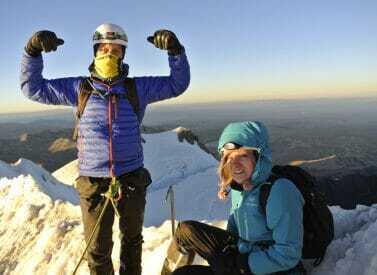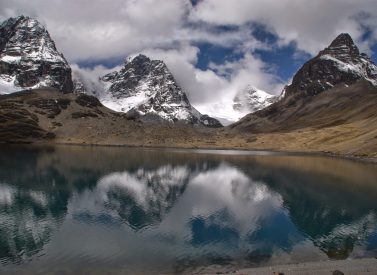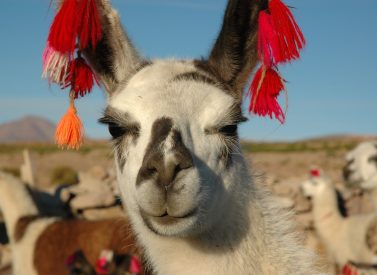
Bolivia Highlights & Trekking Tour
Sightseeing and trekking holiday in highland Bolivia
This Bolivia trekking highlights tour takes in the best places to visit in this beautiful Andean country.
Visit all the travel highlights, including La Paz, the Salar de Uyuni salt flats and Lake Titicaca.
Now, well acclimatised to Bolivia’s high altitude, top it all of with and a fantastic hike in the Cordillera Real.
More on Bolivia trekking highlights tour
From La Paz we travel by bus and train across the altiplano to Uyuni, gateway to the Salar de Uyuni.
The next four days are spent on a four-wheel-drive expedition through this southern altiplano desert. We’ll visit vividly coloured lagoons, conical volcanoes, geysers and mudpools, hot springs and a unique flora and fauna.
Next, to Lake Titicaca and the lakeshore town of Copacabana and to the Island of the Sun, an island rich in history and tradition.
We explore the Island of the Moon, Inca ruins and experience the ancient culture of the locals.
Trekking in Bolivia
Our tour culminates in a four day trek through the heart of the Condoriri National Park in the Cordillera Real.
The trek has three high mountain passes, remote highland communities, herds of grazing llamas, awe-inspiring mountain scenery and soaring condors.
Trip Highlights
Print Share Download as PDF-
Explore the busy highland city of La Paz, see the witches market, Moon valley, take a cable car ride.
-
Travel from Uyuni across southern Bolivia deserts and salt flats (Salar de Uyuni) on a 4wd expedition.
-
Enjoy the vast shimmering Lake Titicaca, and visit the traditional Islands of the Sun and Moon (Islas del Sol y La Luna) where the local people follow a way of life little changed over the centuries.
-
Relax in Copacabana on the shores of Lake Titicaca.
-
Wander through the Cordillera Real, marvel at the peaks of Condoriri on the fully supported, mountain trek
-
The intricate stone work at Tiahuancao pre-Inca site is some of the best there is.
The overall organisation was brilliant. I would say the best guides for me were from La Paz and the tours guides in Uyuni.
D. Duvaux, Bolivia tour
Full Itinerary
Day 1: Arrive La Paz, transfer to hostel
Start your adventure tour in La Paz.
This is one of the world’s most dramatically located cities, situated in a deep canyon at the foot of the giant snow-covered mountain of Illimani (6,440m/21,129ft).
The city has a high proportion of indigenous Indians and is a fascinating place to wander about, with many street markets, museums and plenty of opportunity for shopping.
At 3,600m/11,811ft you’ll notice the altitude in La Paz, so take it easy and drink plenty of water while you acclimatise.
Day 2: To Uyuni by bus and train, hostel (B)
Leaving La Paz early in the morning you travel by bus southwards to the mining town of Oruro where we connect with the train to Uyuni.
An eight-hour journey takes you across the high altitude plain known as the altiplano, home to Bolivia’s Aymara speaking Indians, who scrape a living from farming small plots or herding their flocks of sheep, alpaca and llamas.
Day 3 to 6: Four wheel drive tour of Salar de Uyuni, day 6 return to La Paz hotel by bus (3 x B,L, some D)
Today you join up with other people to embark on the 3-day jeep expedition through the starkly beautiful landscapes of southern Bolivia. This is Bolivia’s poorest region where the land is inhospitable and sparsely settled, survival for the few inhabitants is a daily battle. The scenery is wild and dramatic with salt lakes, volcanic peaks and windswept high desert landscapes.
On the first day you cross the world’s largest salt lake, the Salar de Uyuni. The salt lake of Uyuni is immense, covering an area of 11,000km2 at 3,650m/11,975ft.
It stretches in a blinding white haze as far as the eye can see, with shimmering seemingly floating islands and in the far distance, conical volcanoes.
You may stop at Colchani to see salt being processed. The whole town survives on this small industry. Out on the Salar itself you may see local people digging up the salt and packing it into large sacks to take back to be processed. The first night is spent in one of the scattered adobe villages on the altiplano. Accommodation is either camping or in small local houses in bunk beds with basic facilities, such as running water and blankets provided.
The following day drive on through the beautiful desert landscape, stopping to look at salty lagoons full of flamingoes, past the still active volcano of Ollagua to Laguna Colorada, situated inside the Reserva Eduardo Avaroa. The contrast of the red-coloured laguna filled with feeding birds, the banks of sharp white salts around the water and hazy mountains behind is unique.
The typical, though sparse, vegetation of the reserve is the very slow-growing yareta in distinctive bright green hard clumps, and the red-barked queñua tree. Both of these plants have been endangered because of over use by miners of borax. The plants are burnt to dry out the borax.
The local birdlife is also threatened by people stealing eggs and feathers to sell. If we’re lucky we may catch sight of viscachas, vicuña and ñandu, native fauna of this high altitude desert.
On the third day of the tour you reach Sol de la Mañana, spouting geysers and steaming, bubbling mud pools, continuing to Laguna Verde backed by the volcano of Llicanbur on the Chilean border.
You will be driven back to Uyuni. From there travel back to La Paz by bus and our hotel.
Day 7: Tiahuanaco tour from La Paz, hostel (B)
Either relax and enjoy a free day in La Paz, or join our Tiahuanaco tour.
Tiahuanaco
The pre-Inca site of Tiahuanaco is definitely worth a visit. It was the centre of the Tiahuanaco culture, a flourishing altiplano civilisation, who were expert stone masons and farmers. The Tiahuanaco culture was at its most powerful between AD 400-700 and then, for some unknown reason, it lost its power and began to sub-divide into smaller groups of Aymara kingdoms.
The site of Tiahuanaco covers an area of 10km2 and is thought to have housed a population of between thirty and sixty thousand people at its grandest. The original name for the site was Taypikhala, an Aymara word meaning stone in the centre. The city is in the centre of the altiplano, with the mountains of the Cordillera Real to the east dominated by Illimani.
Through the mountains are the paths to the fertile lowlands. To the west lies Lake Titicaca and the pasture lands for llamas and alpaca. The location was undoubtedly considered sacred, being in a central position geographically and with clear views of the rising and setting sun. Such large populations were sustained through innovative agricultural irrigation practice.
Water was channelled from the lake to a system of raised fields. You can still see this raised field system on parts of the altiplano today. The idea is that the earth is dug out to create long ditches on either side of a mound. The salt from the brackish water then leeches out and the water content of the soil remains constant. The soils resist frost and the silt from the ditches is periodically spread on the mounds.
The high quality stone work at Tiahuanaco is its most striking feature. There are all sorts of buildings within the site, but there are three principal temples. The main ceremonial building is a pyramid construction called Akapana, maybe constructed to reflect the shape of the Andes in the distance. This structure was 17m high and over 200m along each side. It was made of earth and clay and faced with large stone slabs, the higher levels also having carved feline and human tenon heads.
Within the pyramid cut from the top layer was a sunken courtyard with what is presumed to be priest’s houses inside. Burial remains have been found in the pyramid. A complex network of drains and fountains ran within the whole pyramid, some say this reflects the water courses on the mountain of Illimani. On the north side of Akapana there is a sunken courtyard, a semi-subterranean temple, and nearby the huge enclosure of the Kalasasaya temple. The sunken courtyard is lined with stones studded with further tenon heads, mostly human.
This courtyard contained a number of stone sculptures within it including one of a figure known now as the Bennett Monolith. The area was probably used for ritualistic meetings. The Bennet Monolith was over 7m tall and an impressive sight. It, together with the Ponce Monolith is typical of Tiahuanaco figure carving. The decoration on the stonework is finely detailed, with similar patterns to those found on textiles from the same time.
The Kalasasaya Temple has at its entrance the great doorway seen from the sunken courtyard, now reconstructed, made from tremendous blocks of stone. This was a large courtyard for mass meetings. In a corner of this temple is the intricately carved monolithic portal known as the Sun Gate. It isn’t known where this gate would originally have stood, possibly at the Puma Punku temple 1km south of its present day location.
Day 8: Bus to Copacabana, boat to Island of the Sun, camping or basic hut (B,L,D)
Today travel by bus across the altiplano to Copacabana and Lake Titicaca, the snow-capped peaks of the Cordillera Real a dramatic backdrop to your journey.
Lake Titicaca is a truly amazing sight, a huge inland sea covering an area of over 8,500 square kilometres, 176km from end to end and on average 50km from one side to the other.
Set at 3,810m/12,500ft in the Peruvian and Bolivian altiplano lake Titicaca is divided by a narrow strait into two bodies of water.
The smaller in the southeast called Lago Huiñaimarca and the larger in the northwest is Lago Chucuito. From the northeast shore of the lake some of the highest peaks of the Andes, the Cordillera Real, rise to over 6,000m/19,685ft.
The lake averages 100m in depth, the bottom tips sharply towards the Bolivian side. More than 25 rivers empty into the Lake but only one small river flows out at the southern end, the Desaguadero.
There are forty-one islands, some of which, like the Island of the Sun, are densely populated. Archaeological remains around the shores attest to the many ancient civilisations that have thrived here. The ancient tribe of the Uros, the influential Tiahuanaco, Pucaras, and Kollas, and their desendents who live their lives around the lake today.
The Aymara Indians still practice their ancient farming methods on the stepped terraces that pre-date the Incas. They grow quinoa and the potato, endemic crops, and graze llamas and alpaca. Lake Titicaca itself is still highly respected and worshipped as the giver of life, the sacred mother, Mama Qota, the provider of fish and birds.
After lunch a small boat takes you to Pilcokaina on the Island of the Sun, legendary birthplace of the first Incas, Manco Capac son of the sun, and Mama Oclla daughter of the moon.
Day 9: Day walk on Island of the Sun, camping or basic accommodation (B,L,D)
You will explore the island, hiking past the Inca Garden and the Inca Spring, to the village of Challa.
In the afternoon walk to the most impressive ruins on the island, Chincana and the Labyrinth, returning to Challa for the night. (1 night camping or basic accommodation, all meals)
Day 10: Visit Island of the Moon, return to La Paz, hotel (B)
Leaving the Island of the Sun, stop off on the Island of the Moon before returning to Copacabana and on to La Paz for the night.
Four day supported trek
This four-day trek takes us through the heart of the Cordillera Real.
We walk beneath the 13 dramatic peaks of the Condoriri massif, peaks between 5,100-5,648m/16,732-18,530ft, the highest of which is Cabeza del Condor. As its name suggests this peak has a condor like form and is a prominent feature on the Cordillera Real skyline.
The highlights of the trek are the remote Aymara speaking highland communities, herds of grazing llamas, awe-inspiring mountain scenery, mountain lakes often with flamingos feeding and stunning Andean views. There is also a possibility of seeing soaring Andean condors and the rabbit like viscachas.
We use donkeys or llamas to carry all our camping equipment.
Day 11: Trek to Laguna Jurikhota, camping (B,L,D)
We set off from La Paz early in the morning heading toward Lake Titicaca. After around 1.5 hours, we turn off the main route and head into the heart of the Cordillera Real, following a dirt road for another hour.
We arrive at Rinconada (4,400 meters), the starting point of our trek. As we progress, the terrain becomes slightly steeper but remains manageable, with amazing views of the surrounding peaks.
After about three hours walk, we reach Jurikhota Pass (4,850 meters) and our first panoramic views of the Cordillera Real. From the pass, we descend into the valley to Jurikhota Lagoon (4,680 meters) where we set up camp for the night.
Distance walked: 9.2 km/5.7 miles
Day 12: Trek Austria Pass to top of Pico Austria, descend to Laguna Chiarkhota, Camping (B,L,D)
After breakfast, we begin hiking along the edge of the lagoon until we reach the Glacier Lagoon (4,800 meters).
The path is rocky and occasionally goes above the snow line. The trail becomes more challenging, typical of high-altitude terrain, but the views are exceptional. We arrive at Austria Pass (5,140 meters) and sweeping views of the Cordillera Real.
From here, the final push takes us to the summit of Pico Austria (5,350 meters), a challenging but non-technical climb. From the summit, we have a 360-degree view of the Andes.
We descend toward Chiarkhota Lagoon (4,650 meters) where we set up camp. (4,650 meters).
Distance walked: 6.2 km/3.8 miles
Day 13: Trek to Jistana Pass towards Huayna Potosi. camping (B,L,D)
Today we continue towards the Jistana Pass (4,900 meters) then descend into the area near the historic Racachas mine.
From there, we continue trekking toward Huayna Potosí. Along the way, we encounter small streams and the occasional sighting of wildlife, such as llamas or alpacas grazing nearby. We might even see a condor soar above.
By late afternoon, we reach the campsite at the foot of Huayna Potosí’s west face.
Distance walked: 15.8 km/9.8 miles
Day 14: Trek to Huallatani Pass with views of Huayna Potosi massif, transfer to La Paz, hostel (B,L)
After breakfast, we set off early for the final leg of our trek.
The ascent to the Huallatani Pass (4,850 meters) is challenging. The trail meanders through high-altitude terrain. As we get closer to the pass, stunning views of the Huayna Potosí massif come into full view.
From here, we begin our descent along a trail that passes through valleys dotted with native flora. We reach the pick-up point by mid-afternoon, where our vehicle back to La Paz is waiting for us.
Distance walked: 8.9 km/5.5 miles
Day 15: Tour ends with transfer out (B)
Tour ends La Paz. Fly home or extend your trip in Bolivia / South America.
Prices From $3,300 / £2,683 per person
What's Included?
Hotels, transfers,English speaking local guides, public transport as listed, fully supported trek with guide and pack animals, accommodation, communal camping equipment
What's Not Included?
International flights (we can look for these), airport taxes, tips, personal items, sleeping bag, personal expenses, alcoholic or soft drinks, insurance
Accommodation
We use 2-3* hotels in towns and cities, with hot showers and private bathrooms.
Salar de Uyuni – we use basic accommodation (upgrades to salt hotel available at extra cost) which may include shared rooms and bathrooms.
Lake Titicaca – we use basic hotels with private bathrooms.
When camping on the trek we use two-man, mountain tents, and a dining tent. Toilets are either latrine or toilet tent.
Tour Staff
You will meet bilingual, English-speaking guides as you move around from site to site (tour leader available at extra cost).
They are qualified Bolivian guides and will bring provide you with all the local timings and information.
Trekking guides
Our guides are experienced mountaineers and we typically employ one mountain guide to every four clients on courses, and one guide to two clients on climbs.
They will not just show you the way but will teach and empower you to succeed in the mountain environment.
All are qualified and selected for the attention to detail and, above all, safety and assessment of mountains, conditions and your capabilities.
Guide’s decisions are always final as they do so based on many years of experience of trekking among Bolivia’s peaks.
Cooks, mule drivers and additional staff are all from the local, nearby communities and we have worked with them for a long time.
Meals
Vegetarians and many other dietary requirements are catered for without problems. Please let us know in advance of any requirements you have.
Salar de Uyuni
Meals are provided at hotels – breakfasts usually involve hot drinks, coffee, juice, toast, eggs and fruits. Lunch will either be sandwiches and snacks (if on the road) or a soup with a main meal of rice/pasta.
Dinner usually consists of a soup to start and then a main of rice, pasta, mashed potato etc. Note that Uyuni remains a very remote area and sometimes choice is limited.
Lake Titicaca
Here, fish, fruit and rice play a larger role in people’s diets, so you can expect to be served trout from the lake.
Copacabana town has more international type options.
La Paz and towns
There are a wide variety of eateries in towns and cities, from chicken and chips or burgers to more traditional fare. Quinoa, rice, potatoes and meats all feature heavily, as do soups.
Camping
You wake early, usually around 07.00. Breakfast is served in a dining tent, and consists of hot drinks, porridge, toast, jams and bread, and your guide will explain the day’s trekking plans.
Lunch is usually around 13.00 and can feature soups, meats, salads and fish, with vegetarian options and hot drinks too.
The campsites are comfortable and around 17.00 hot drinks, popcorn and other snacks are served to help you recover energy.
Dinner is served around 19.30, and will feature pasta, mashed potatoes, meat, fish or vegetarian options, followed by hot drinks and a pudding.
Activity Level
In order to get the most out of the tour you should be in good physical condition.
We spend a lot of time moving around at high altitude plus include a high altitude trek.
It is not easy to grade the fitness level required for the trip, since it is a subjective matter.
However, we have classified it as a moderate to difficult trek.
We trek approximately five to eight hours per day with some long ascents and descents at high altitudes, and on consecutive days.
No previous experience is necessary, but a good positive attitude and any previous experience of high altitude trekking in remote areas is a plus.
Practical Information
An introduction to Bolivia
Land-locked Bolivia is a country of dramatic landscapes and fascinating native cultures and traditions.
The Altiplano or “High Plain”, averaging 3,800m, is its most populous region. The vast, luminous plateau is flanked to east and west by parallel Andean ranges.
La Paz, the world’s highest capital, lies in a deep canyon at the edge of the Altiplano, and at the foot of Illimani (6,400m). It is a striking city for its dramatic setting and its strong Indian character.
Lake Titicaca is the world’s highest navigable lake. It was sacred to the Incas; according to legend, their founding emperor-gods rose from these waters to give birth to their empire. Just south of the lake stands the sacred pre-Inca site of Tiahuanaco.
ATOL holiday protection
Andean Trails has 25 years of experience of putting together the best South America holidays.
We pay a fee to the CAA for every licensable passenger we book since we hold an Air Travel Organiser’s Licence granted by the Civil Aviation Authority. In the unlikely event of our insolvency, the CAA will ensure that you are not stranded abroad and will arrange to refund any money you have paid to us for an advance booking.
We also offer ATOL (Civil Aviation Authority) protected holidays to give our customers peace of mind when booking and travelling.
When you buy an ATOL protected air holiday package from Andean Trails Ltd you will receive a Confirmation Invoice from us confirming your arrangements and your protection under our Air Travel Organiser’s Licence number 6275.
You can read more about ATOL, who is covered and what protections you have if not ATOL-covered, on our ATOL page.
What is ATOL?
The CAA’s ATOL scheme offers protection to your money and your holiday if you book with us. Not everybody is covered (see ‘Who is covered?’ for more), as you must purchase an ‘air package holiday’ with Andean Trails to be protected.
And ‘air package holiday’ is defined as including a flight and some ground services (hotel, transfer, trek etc). This is also known as an ‘ATOL-protected holiday’.
Who is covered?
To be covered by ATOL, you must book a flight and some ground services with us and be from the UK. If you are from the UK and only book ground services and no flights, you are not covered by ATOL (see below for more on how non-ATOL clients are covered).
If you are outside the UK and buy flights with us, you will be ATOL protected IF any of the flights booked with Andean Trails touches/stops in the UK at any point during your holiday package booked with us.
If you buy your flights elsewhere, please check with that agent if you are ATOL protected. Be careful with online flight purchases and make sure you know what protection you have, if any, before paying for flights.
Not all holiday or travel services offered and sold by us will be protected by the ATOL scheme. Please ask us to confirm what protection may apply to your booking.
For land only holidays not involving any air travel, in accordance with “The Package Travel, Package Holidays and Package Tours Regulations 1992”, all UK passengers booking with Andean Trails Ltd. are fully protected for the initial deposit and subsequently the balance of all money paid to us, arising from cancellation or curtailment of travel arrangements due to the insolvency of Andean Trails.
I’m not ATOL covered, what protection do I have?
If you are not ATOL covered, any payments you make to us go to a Trust account.
We can only access this money once your tour has been completed, meaning that if anything happens to Andean Trails Limited while you are on holiday, then your money is secure and you can either complete the trip or be able to make it home.
If you pay for your holiday with a credit card, some offer payment protection – please check with your cardholder.
You also should have cancellation protection written into your insurance (which we recommend you have at the time of booking) in case you need to cancel.
Be safe in Bolivia
Bolivia is generally safe, but crime is not unknown and travellers should take the precautions they would anywhere else, especially:
- Leave paper valuables in hotel safe (caja fuerte), taking only what you need for the day. Carry a copy of passport (leave original in safe). N.B. When travelling, carry paper valuables in a money belt under clothing, not in a ‘bum-bag’.
- We suggest you do not exchange money on the street. Use either a casa de cambio (bureau de change) or bank / ATM.
- Care is needed in La Paz and other cities. Only carry a daypack if you’re in a group. We suggest you carry this on your chest. Carry camera in bag, replacing after use.
- Always take special care around markets, bus terminals and busy streets. Never carry a bag or valuables in these areas, as bag-slashers and pickpockets sometimes operate.
- Beware of distraction techniques.
- At night, avoid quiet streets or streets with poor lighting, especially if alone; it’s best to use taxis at night, wherever you are.
- NEVER leave your bag(s) unattended, especially in airports, bus terminals and hotel lobbies.
Food and drink in Bolivia
Don’t forget to read our blog about Bolivian food.
Starters & snacks
Salteña Hot beef or chicken pasties containing egg, a black olive and lots of gravy. Can be muy picante, medio picante or poco picante (very, quite or not very hot).
Empanada Cheese pasty.
Chairo A La Paz Soup with meat, veg, chuño and aji. Locals add llajua or halpahuayca, hot sauces set on the table.
Locro A tropical soup with rice, beef jerky or chicken, banana, potato and egg.
Anticucho Beef heart kebab on a skewer with boiled potato.
Palta reina Avocado filled with chicken salad.
Tamal or humita Ground maize steamed in banana or maize leaves, filled with meat or cheese; sometimes they are served sweet, with sugar instead of meat.
Main dishes
Thimpu A lamb soup/stew.
Plato paceño Fried cheese, potato, broad beans, corn & hot llajua sauce.
Sajta de pollo Hot spicy chicken with onion, potato and chuño.
Silpancho Fried breaded meat with rice, egg and banana.
Chicharron Deep fried pork.
Churrasco and Lomo Fillet or rump steak.
Parrillada Mixed grill
Pollo con papas Chicken and chips
Pejerrey White fish from Lake Titicaca
Trucha Trout
Desserts
Keke or torta Cake
Drinks
Singani Grape brandy. Bolivian national drink.
Chuflay Singani and 7 Up.
Chicha Fermented maize beer. Drunk mainly in rural areas of the Valleys around Cochabamba.
Cerveza Beer. Mainly lager, which is very popular. There are several regional brands such as Paceña.
Vino Wine. The best Bolivian wines are from Tarija. Some are very good, including La Concepcion. Good Chilean wines available locally include Undurraga and Casillero del Diablo. Wine is available in smarter restaurants and is served by the bottle (botella) and sometimes by the glass (copa).
Vino tinto Red wine.
Vino blanco White wine.
Agua mineral Mineral water, which is mainly drunk by foreigners so not usually available in rural areas. You will need to specify con gas (carbonated) or sin gas (non-carbonated)
Api A thick, hot drink made from red maize, cinnamon, cloves and lemon, served at dawn on the roadside – delicious and warming.
Mate Herbal tea, which has become very popular. The best known is mate de coca, which is often served to tourists on arrival in La Paz to ward off symptoms of altitude sickness. Many other herbal teas such as manzanilla (camomile), yerba luisa (lemon grass), yerba buena (mint), and inojo (dill) are available. Mate is usually served after lunch.
Jugos Juices. In the tropics, fruit juices such as carambola (star fruit) and tamarindo (tamarind) are delicious.
Useful Spanish phrases
Learning a few words of Spanish can really ingratiate you with the locals you’ll encounter, adding to the enjoyment of your holiday.
Below are some basics to get you started.
Greetings:
Good morning Buenos días
How are you? ¿Cómo estás?
Good afternoon Buenas tardes
Good bye Adiós
Most frequently asked questions (theirs):
Where are you (plural) from? ¿De dónde eres (son)?
What time is it? ¿Qué hora es?
Where have you come from? ¿De dónde vienes?
Give me (frequent, unwelcome question) Dáme / regálame
Most frequent questions (yours):
How much is it? ¿Cuánto vale?
What is this place called? ¿Cómo se llama este lugar?
What’s your name? ¿Cómo te llamas?
Do you have a map? ¿Tienes un mapa?
In the street / places:
Where can I find a currency exchange? ¿Dónde encuentro una casa de cambio?
Where is there a cash machine? ¿Dónde hay un cajero automatico?
Where is the underground/subway station? ¿Dónde esta la estacion de metro/subte(Buenos Aires)?
Where can I find a taxi? ¿Dónde puedo encontrar un taxi?
Where can I find a Supermarket? ¿Dónde puedo encontrar un supermercado?
Where is the hospital? ¿Dónde esta el hospital?
Where can I find a restaurant? ¿Dónde puedo encontrar un restaurante?
In the hotel:
What floor am I on? ¿En qué piso estoy?
Where are the elevators/lifts? ¿Dónde están los ascensores?
How do I access the Internet? ¿Cómo puedo acceder a Internet?
How do I call for room service? ¿Cómo llamo para el servicio de habitación?
How do I call down to the front desk? ¿Cómo llamo a la recepción?
In the restaurant:
A table for two/four please Una mesa para dos/cuatro, porfavor
I would like to drink… Me gustaria tomar….
May I see a menu? Puedo ver la carta/menu?
I would like to order.. Me gustaria pedir…
Can you bring me the check/bill please. Me trae la cuenta por favor
Emergency:
I need help. Necesito ayuda.
I have lost my passport. He perdido mi pasaporte.
Someone stole my money. Alguien robó mi dinero
I have been robbed. Me han robado
I need to call the police. Necesito llamar a la policía
I need to call the (country) Embassy Necesito llamar a la embajada de (country)
Help! ¡Socorro!
Health and Safety
A full Health and Safety document will be sent to you at the time of booking and before you travel.
You can also read it on our website, or contact us for more information.
Travel Insurance
It is a condition of booking any of our holidays that you have comprehensive travel insurance to cover you for trip cancellation (by you), activities involved and destination. This cover should include repatriation costs, air ambulance and helicopter rescue.
We work with Travel Nomads, who offer insurance solutions to people in more than 140 countries across the world.
Should you decide not to purchase this insurance, you must provide us with details of your alternative insurance with or before your final payment.
And lastly...
Many of our tours travel through remote areas.
We believe our clients should be aware that the remoteness of some of our tours so very special could also cause certain problems.
Thus, whilst we endeavour to minimise the chances of anything unexpected happening, it has to be noted that no itinerary can or should be rigidly adhered to.
This is the very nature of adventure travel and we expect our clients to be prepared for delays and slight alterations in our programmed events.
Also, shared tours may include travellers from all over the world whose native language is not English.
Prices From $3,300 / £2,683 per person
Guide price, per person, shared room basis
Upgrades available
Shorter/longer stays possible

Dates & Prices
Prices From $3,300 / £2,683 per person
Guide price, per person, shared room basis
Upgrades available
Shorter/longer stays possible
Can’t find what you’re looking for? Get in Touch
+44 (0)131 378 5593
+44 (0)131 554 6025



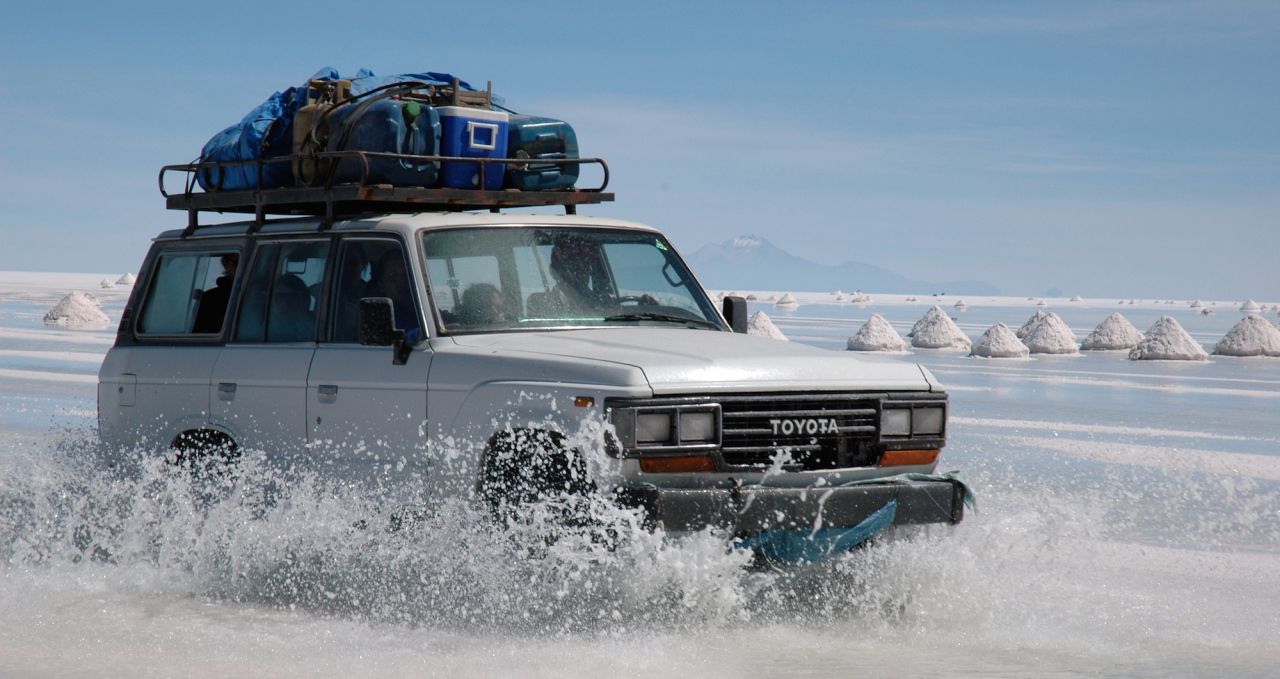
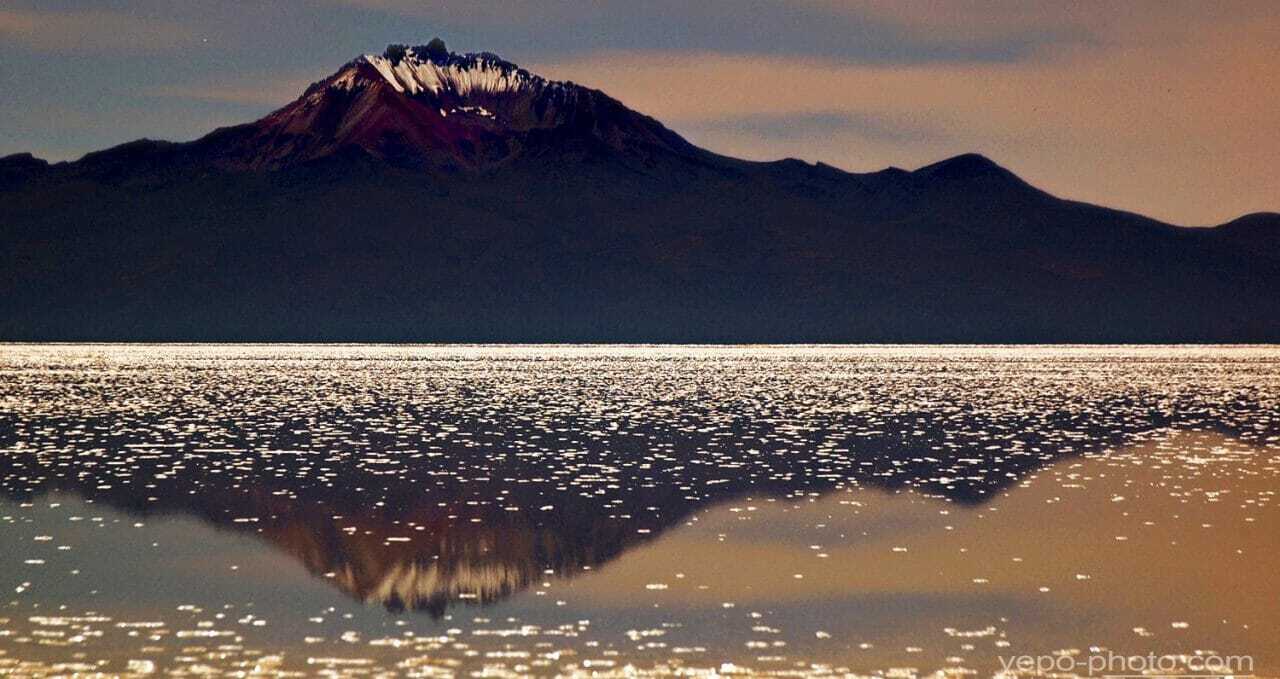
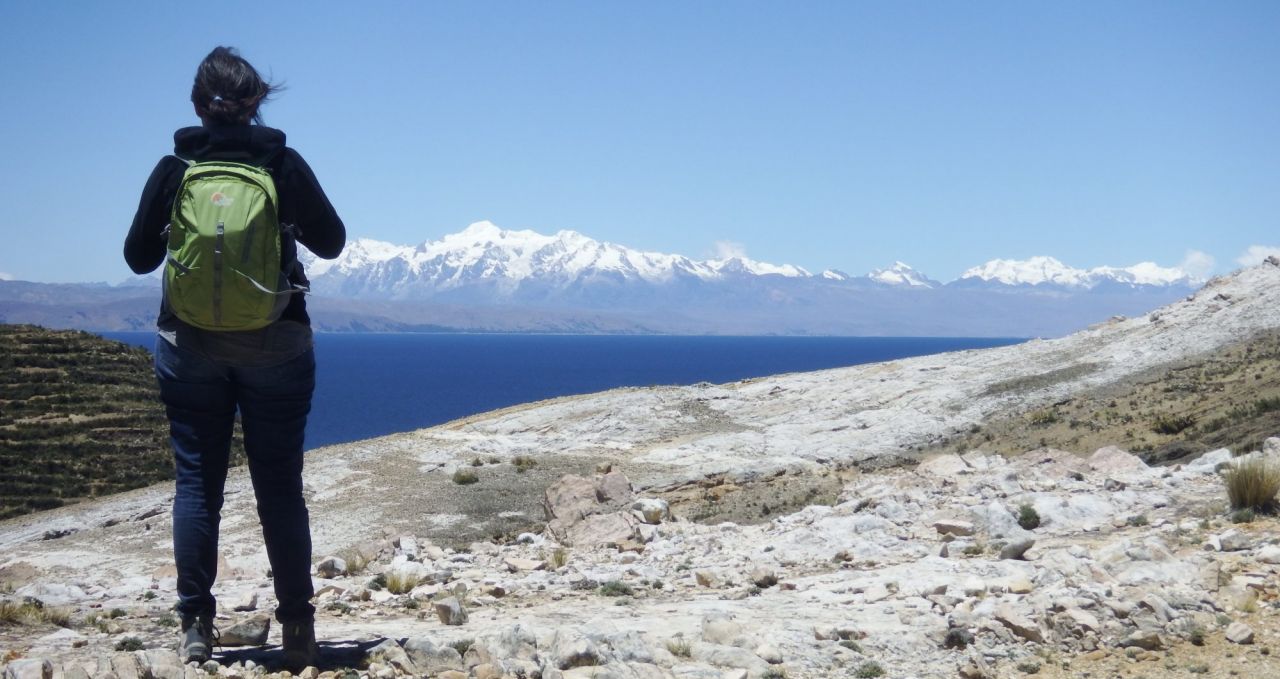
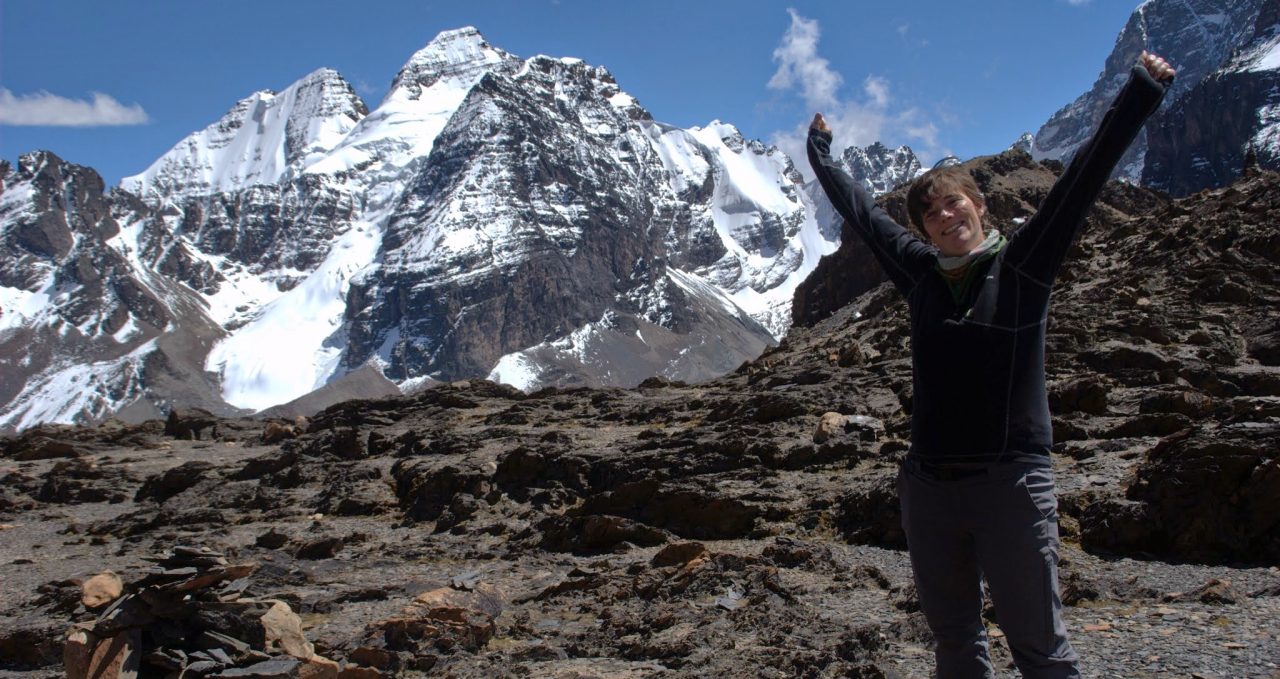
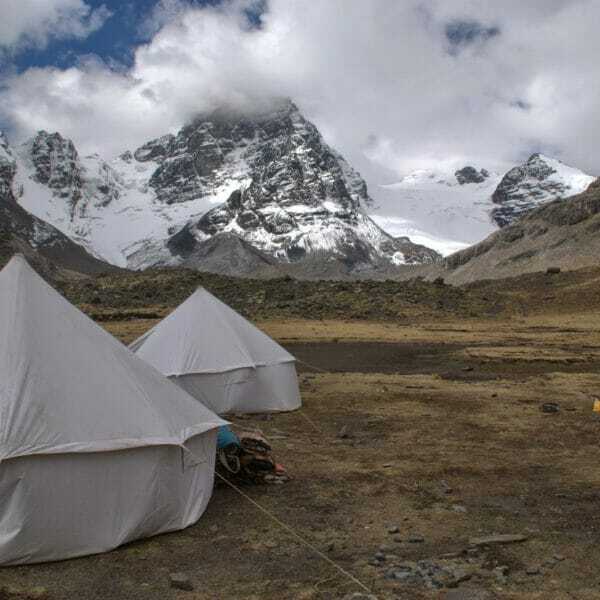
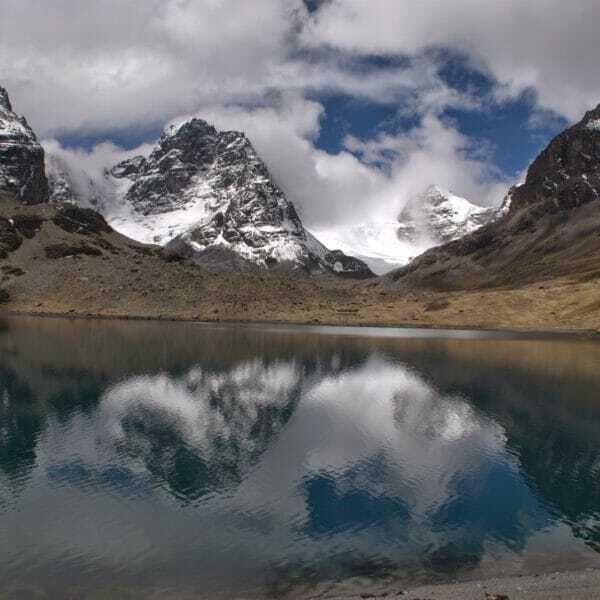
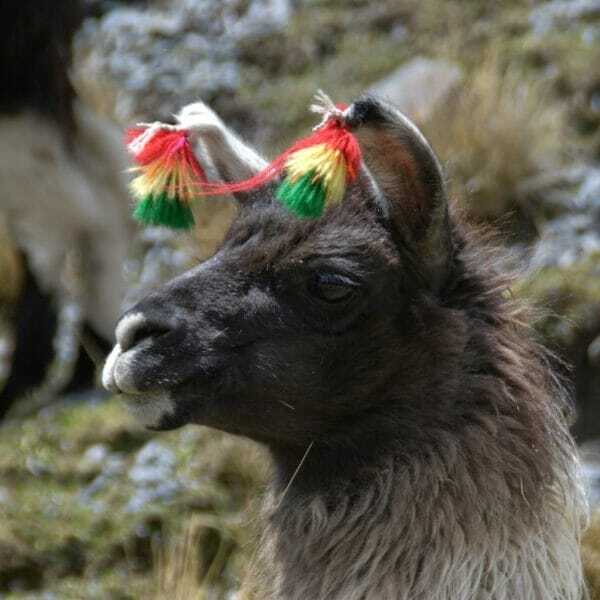
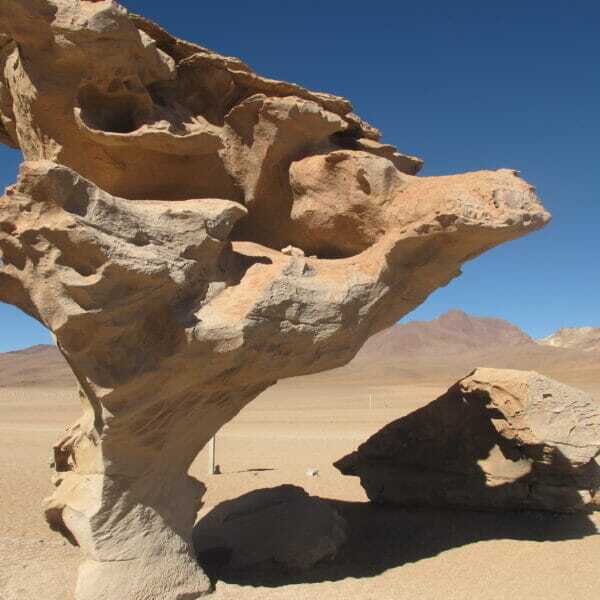
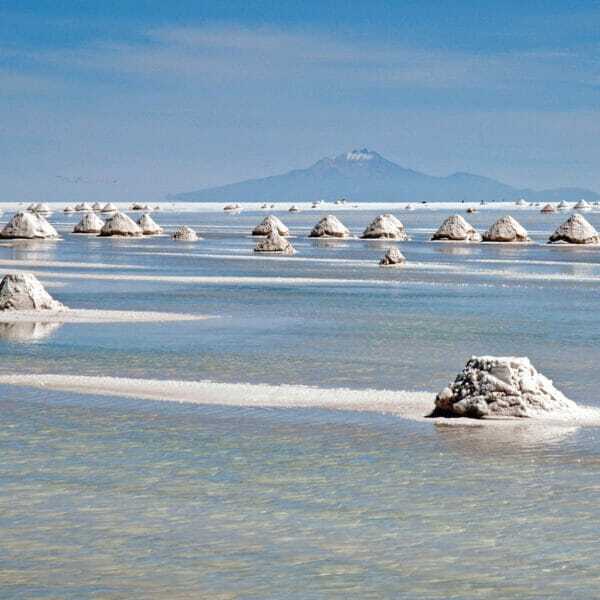
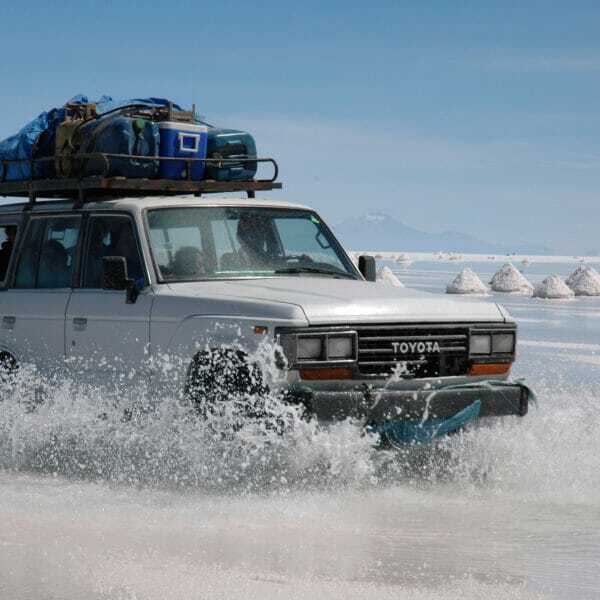
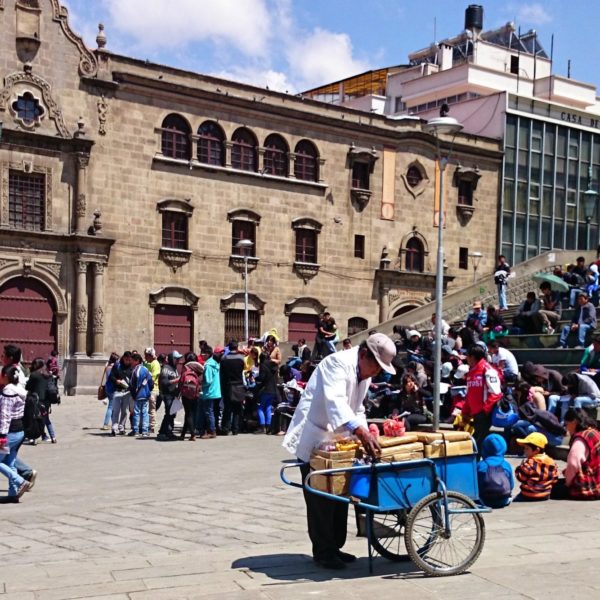
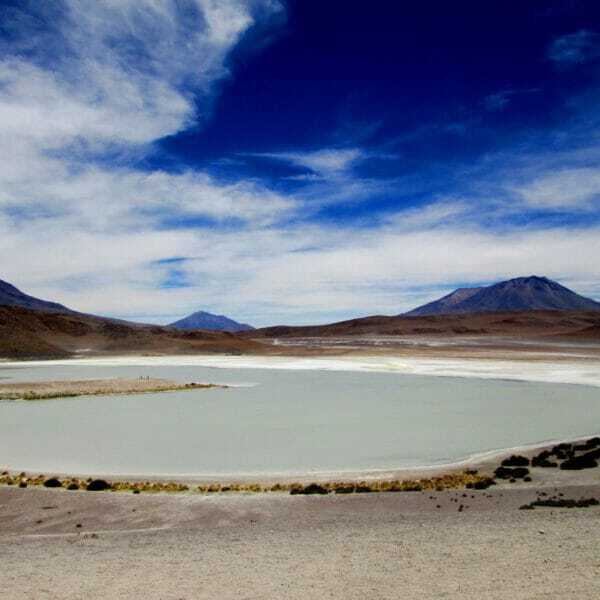
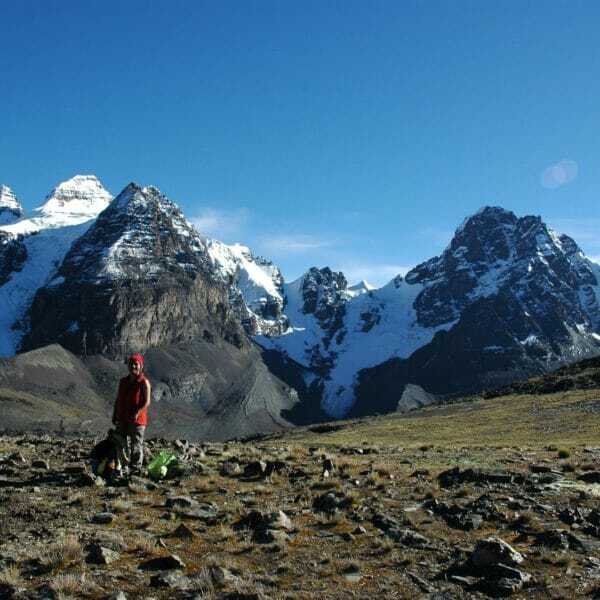

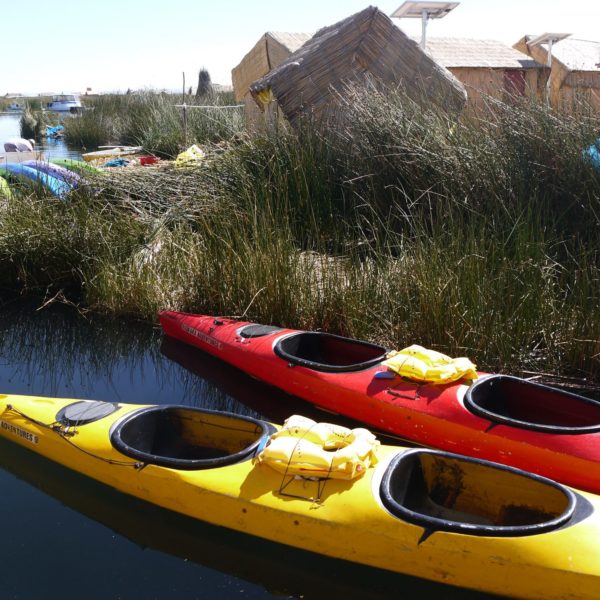
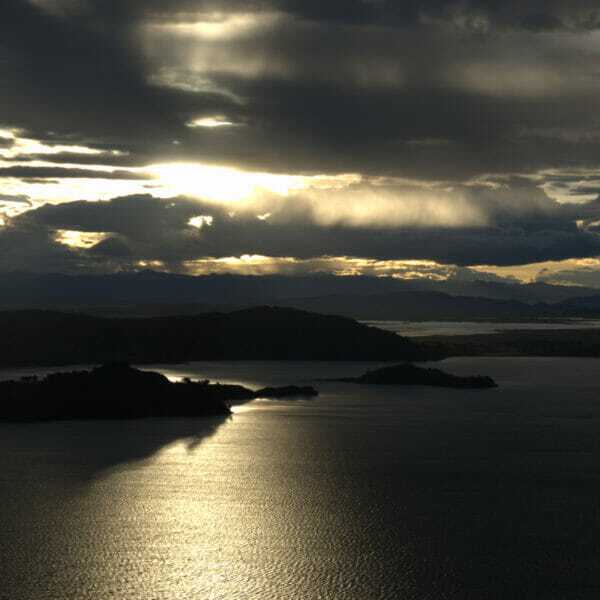
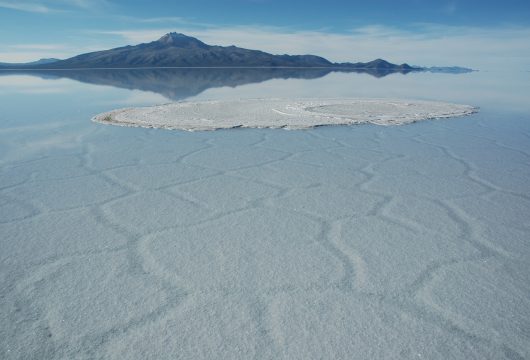
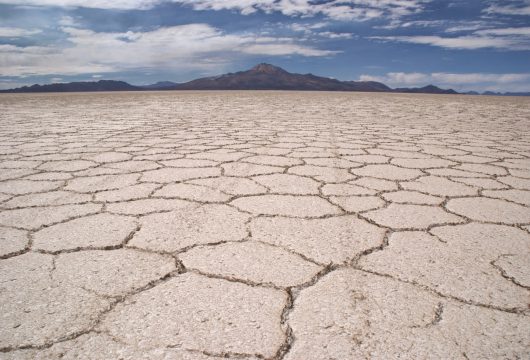
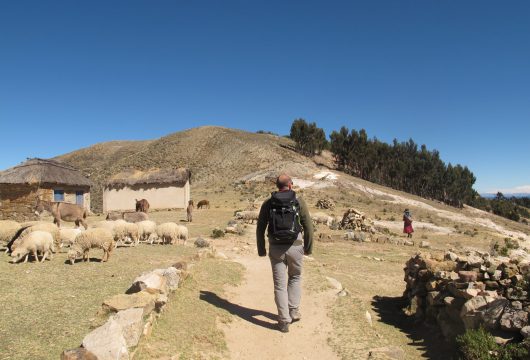
 a Tailor Made Tour
a Tailor Made Tour 